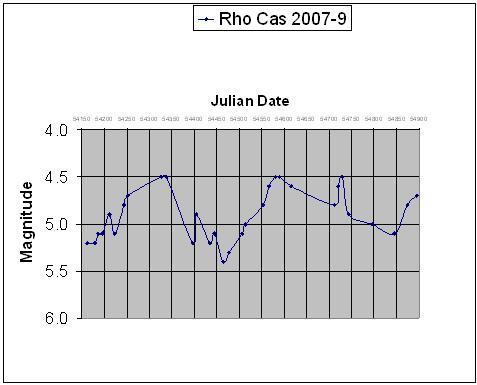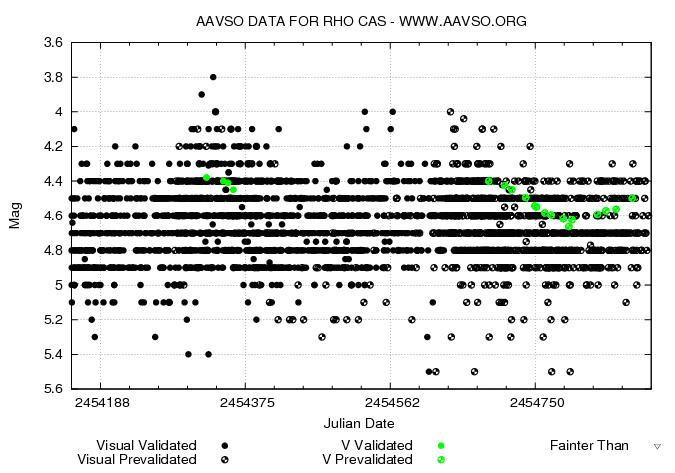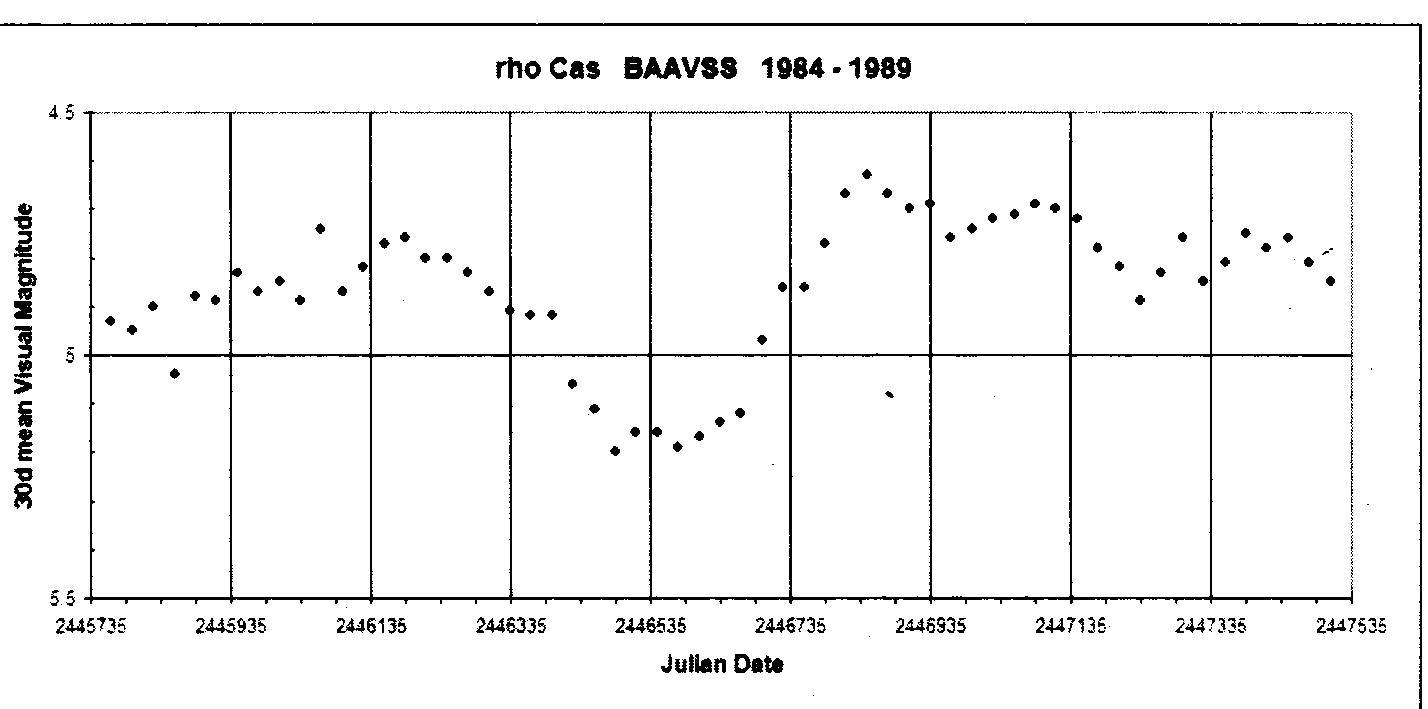Rho Cas Observing Notes 2007-2009
For about 2 years I observed the Semi-regular variable star Rho Cassiopeia. Semi-regular variables have a rough period and rough range, but both these can be somewhat changeable. Rho Cassiopeiae’s period is given as around 10.5 months.
Rho Cassiopeiae is classified as an SRd star, which means it is an F-type supergiant and thus not as red as most of these stars. Nevertheless, I found it showed some signs of the classic “Purkinje” effect which means that it starts to seem brighter if you look at it too long. It also suffers from having comparisons that are several degrees away, which can make estimates difficult or a little unreliable if Cassiopeia is a rising “W” so that a key comparison star is at a somewhat lower altitude than Rho itself and thus extincted by the atmosphere more (this may be a cause of some of the variation in my estimates, particularly in those around Julian date 54720).
This diagrams summarises my observations over 2 years, with the AAVSO observations for the period.
Rho Cass light curve 2007-9 Image Credit: Steve Woodbridge


My results broadly agreed with the AAVSO’s – suggesting one maximum around Julian day 54330 (August 07), a second around Julian day 54560 (April 08 – around 8 months apart) and a third due in Spring 09, with a minimum at the start of my observations and in between the maxima.
It is interesting to note the high spread of magnitude values in the AAVSO observations. This reflects the “personal equation” in how people see a particular star. Rho Cassiopeiae seems particularly prevalent to this, as in discussions with another UK variable star observer he remarked how different visual observers can give estimates varying by about half a magnitude on the same night.
This star has been observed over a long period, and at times shows significantly deep fades (eg in 1984 – see averaged plot below from BAA data). These deep fades in particular are unexplained (some have suggested an eclipse of some sort). It is thus an interesting star to observe, although it does need some patience, as the period of 10.5 months is quite long and the range fairly small.

Some useful Links
British Astronomical Association (BAA) Variable star section
American Association of Variable Star Observers (AAVSO)
by Steve Woodbridge
Aug 2009
